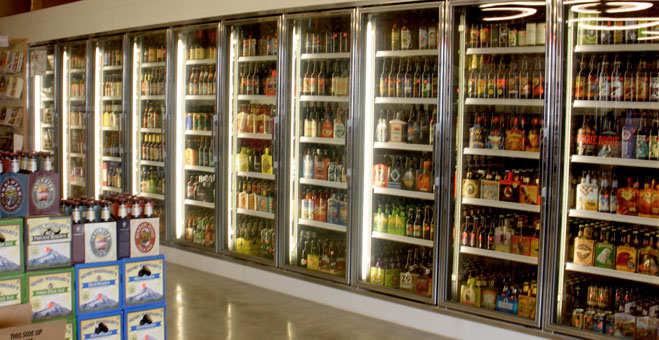Five Tips To Buying Better Beer

As craft beer continues to gain popularity, more and more businesses are trying to cash in on the new demand. Anyone reading this has likely noticed beers from smaller breweries popping up in previous unlikely places like chain restaurants and big box discount stores. How can you, as the consumer, make sure you’re spending your money on something you’ll enjoy? Follow these five tips to buying better beer, and you’ll never be disappointed by less than brewery fresh beer again.
1. Check The Date
Beer is a perishable food item, just like anything else you might buy at the grocery store. You wouldn’t buy a gallon of milk without checking the date. Give your beer the same respect. Most breweries will put some kind of “packaged on” or “best by” date on their bottles and/or boxes to help consumers know they’re getting fresh beer. Checking these dates isn’t always easy though. Fresh Beer Only is a great site that helps take the mystery out of beer date codes. As a general rule of thumb, beer is freshest within 120 days of packaging. After that, it will likely not taste how the brewer intended.
2. Avoid Brightly Lit Coolers
Beer has two mortal enemies. One of them is light. Most breweries do their best to package their beers in a way that will keep them free from light as much as possible. However, a lot of times, stores don’t show the beer the same respect. If the beer is kept under bright florescent lights, its flavor might be affected through a process called “skunking”. Green and clear bottles are especially susceptible to this. Brown bottles block most of the harmful light, and cans provide total protection from harmful UV light. “Skunked” or lightstruck beer smells just like it sounds: like a skunk. Obviously, this is not a good thing. The worst part is that beer can become lightstruck in a matter of minutes! Whenever possible, buy beer that isn’t kept under bright UV lights, or at least grab yours from the back of the cooler where it is normally darker.
3. Buy Cold Beer
Not only is cold beer ready to drink when you buy it from the store, its freshness is also being helped by the colder temperature. Beer’s second mortal enemy is oxygen. Brewers put a lot of effort into keeping oxygen out of their packaged beers, but inevitably some miniscule amount will find its way inside. Once it comes in contact with the beer, it starts the slow but steady process of making that beer stale. First, your hop aromas and flavors fade away. Next, your malt flavors become muddled, and finally you have a bottle of something that tastes kind of like wet cardboard.
Warm temperatures speed up this oxidizing process. Beer that is shipped and stored cold will last longer than beer that is left to sit out on a warm shelf. Better beer stores will have plenty of cold storage for their beer or will work to keep the temperature of the entire store low to help slow oxidation. Also, keep in mind where the beer was before it was on that shelf. Many big box stores have storage areas or warehouses that aren’t climate controlled. If they are receiving huge shipments of beer to a centralized location, it could spend months in a hot place before being moved to a cold refrigerator case.
4. Consider the Source
If you find your favorite specialty beer in a remote gas station in the middle of nowhere next to expired beef jerky and think it’s your lucky day, take a moment of pause. How much of that beer do you think that gas station sells each month? Do you think they’ve kept it under the best conditions?
The same goes for stores that offer a ridiculous variety of beers. Some do a very good job of monitoring their inventory to give consumers the freshest beer possible. Others just pride themselves on having a whole lot of stuff. Some of it might have been sitting there since the day they opened.
5. Use Common Sense
Buying fresh delicious beer is a lot like buying anything else. Use common sense and you will get good results. Much like buying seafood, there are places you should and should not buy from no matter how appealing the offer might be. If you walk into the supermarket in July and see your favorite Christmas seasonal, it is not a wonderful treat from the beer gods. It is old beer. You shouldn’t buy it any more than you should a container of egg nog that mysteriously winds up on the shelf at the same time of year. Follow these basic tips and you should be much happier with the beers you buy.
Would you like to learn more about beer? Join BREW-ed for a Brewery & History Walking Tour .

